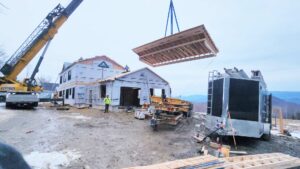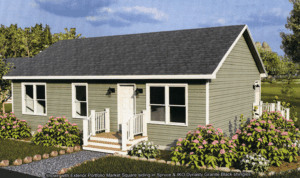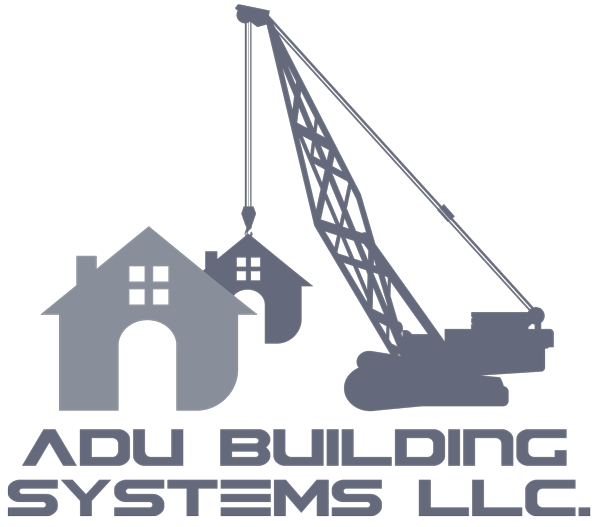What Affects the Cost to Build an ADU in Massachusetts? A Realistic Guide for Homeowners
 Accessory Dwelling Units (ADUs) continue to grow in popularity across Massachusetts. Homeowners are turning to these smaller, secondary homes for a variety of reasons—housing family members, earning rental income, or adding functional space without moving. One of the most common questions we hear is about the cost to build an ADU.
Accessory Dwelling Units (ADUs) continue to grow in popularity across Massachusetts. Homeowners are turning to these smaller, secondary homes for a variety of reasons—housing family members, earning rental income, or adding functional space without moving. One of the most common questions we hear is about the cost to build an ADU.
At ADU Building Systems, LLC, we help clients across the state understand what drives pricing and how to make smart, informed choices. The truth is, ADU building costs depend on several factors. Knowing what affects your bottom line can help you budget more confidently and avoid unexpected expenses.
Unit Type Plays a Major Role in Overall Cost
The type of ADU you build will influence the total cost. Detached ADUs usually cost the most. They require a new foundation, separate utility connections, and additional structural components. However, they also offer the highest level of privacy and flexibility.
Attached ADUs are often less expensive. They share at least one wall with the main home and may tie into existing systems like plumbing or electricity. This can reduce both material and labor costs.
Converted ADUs—made from garages, basements, or attics—tend to be the most cost-effective. They make use of existing space, which cuts down on new construction needs.
At ADU Building Systems, we help you compare these options during the planning phase. Our team reviews your property layout, zoning rules, and goals to find the most efficient and practical approach.
Location, Zoning, and Site Prep Can Drive Up (or Down) the Cost
Every town in Massachusetts has its own set of ADU rules. For example, Brookline might have different setback and height limits than Cambridge or Worcester. These local requirements can affect your design and how much land you’re allowed to use.
Site conditions also matter. Grading, soil quality, tree removal, or tight lot access can increase preparation costs. That’s why we always conduct a site review early in the process. We look for potential issues before construction begins to help keep your budget on track.
Material Selection and Build Type: Site-Built vs. Modular
How you build your ADU matters just as much as what you build. Modular construction, which is our specialty, often lowers the total cost compared to traditional site-built methods. Factory-built units benefit from reduced waste, shorter construction times, and bulk material savings. In fact, modular homes can cost up to 50% less in labor and use 26% less lumber than similar site-built options.
Modular builds also reduce the risk of delays caused by weather or trade shortages. Units are built in controlled environments and then delivered to the site. This method improves quality and allows for better scheduling.
Labor and Timeline Considerations
The longer a project takes, the more it usually costs—especially if you’re paying interest on a construction loan. Modular construction offers a faster path to completion. Our team works on a streamlined timeline to reduce on-site labor hours and speed up delivery.
Delays often happen when managing separate contractors. At ADU Building Systems, we provide turnkey service. This means we handle everything from design and permitting to delivery and finishing work, which helps keep the project on schedule.
Financing Can Affect the Overall Cost Over Time
How you pay for your ADU will influence your long-term costs. Some homeowners choose to use a home equity line of credit (HELOC). Others refinance their mortgage or apply for a construction loan.
We help you review these options early in the process. Each has pros and cons depending on your financial position. Planning your financing early helps you avoid delays and reduces the chance of running over budget during construction.
Value Add: Rebates, Rental Income, and Property Appreciation
 While there’s a cost to build an ADU, there are also long-term benefits. Many of our builds qualify for state energy-efficiency rebates, which can reduce upfront expenses.
While there’s a cost to build an ADU, there are also long-term benefits. Many of our builds qualify for state energy-efficiency rebates, which can reduce upfront expenses.
If you rent your ADU, you could bring in a steady monthly income. In many parts of Massachusetts, rental rates average $3,000 or more per month. That means your ADU could pay for itself within a few years.
An ADU can also raise your property value by as much as 30%. It makes your home more attractive to future buyers, especially those looking for flexible housing solutions.
Why ADU Building Systems is a Smart Financial Partner
We believe in making the ADU building process simple, affordable, and reliable. Our team provides clear pricing and helps you understand every step along the way. We handle permitting, zoning, and design so you don’t have to.
All of our modular homes come with a 10-year structural warranty. We also help clients explore available rebates and energy-efficient upgrades. Because we’re based in Massachusetts, we know how to navigate local regulations and get your project moving without unnecessary delays.
Start with a Cost Conversation, End with a Smart Build
There’s no single answer to how much it will cost to build an ADU—but that doesn’t mean you have to guess. At ADU Building Systems, we offer straightforward guidance based on your needs, your property, and your goals.
If you’re ready to explore options, call us at (508) 789-0634 or (339) 499-8962. You can also email us at [email protected] to schedule a consultation. We’re here to help you start strong and stay on budget.
